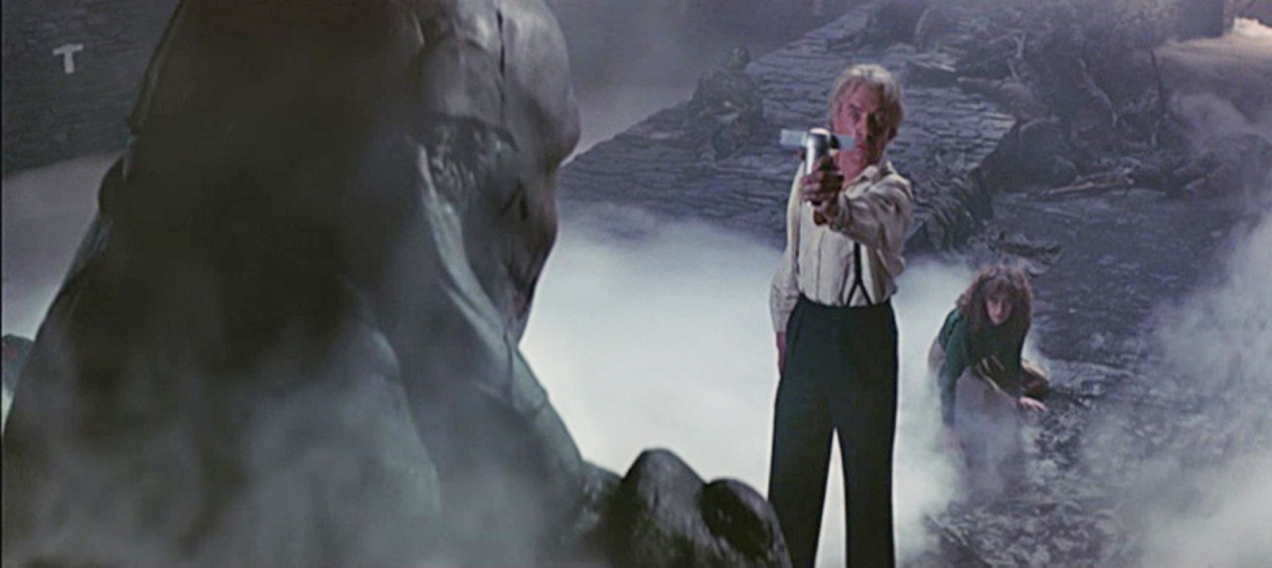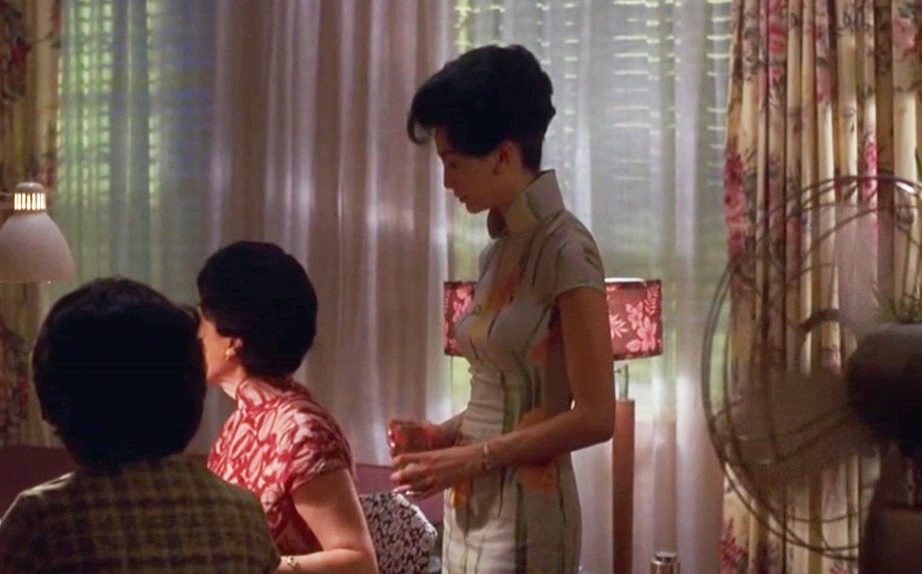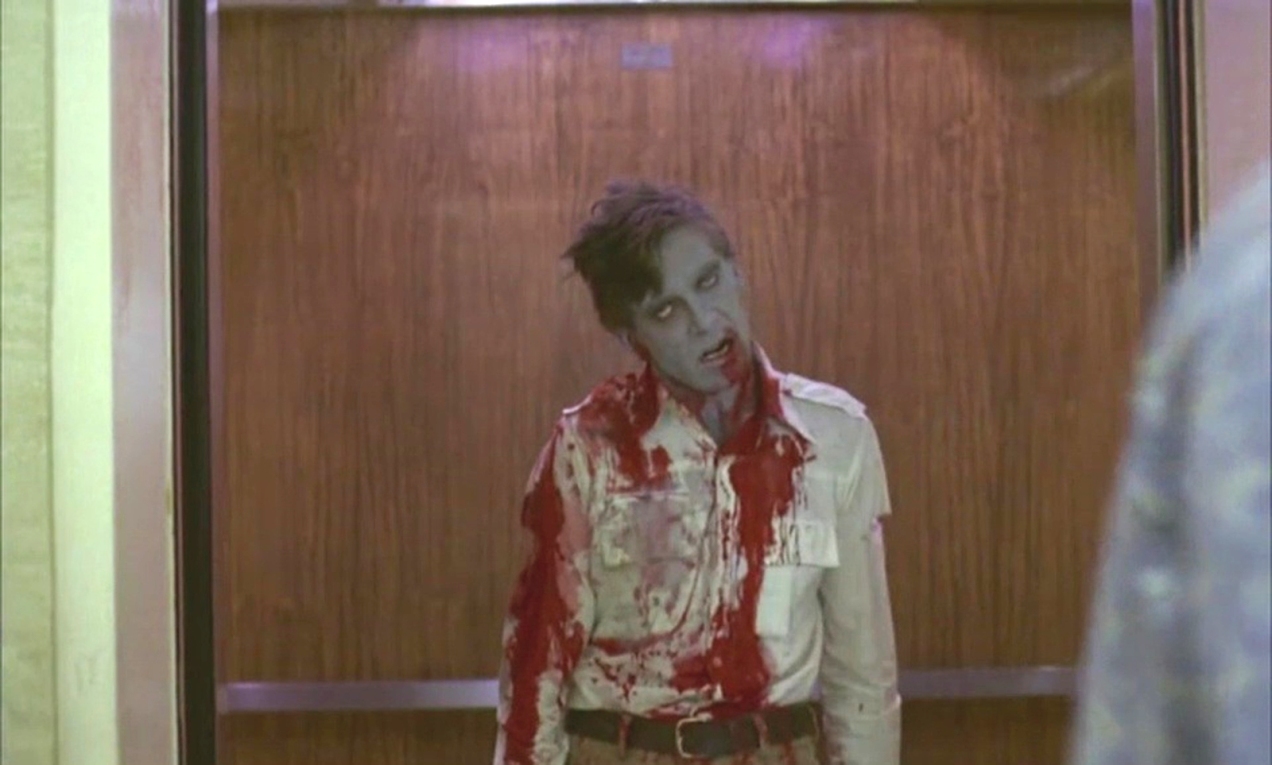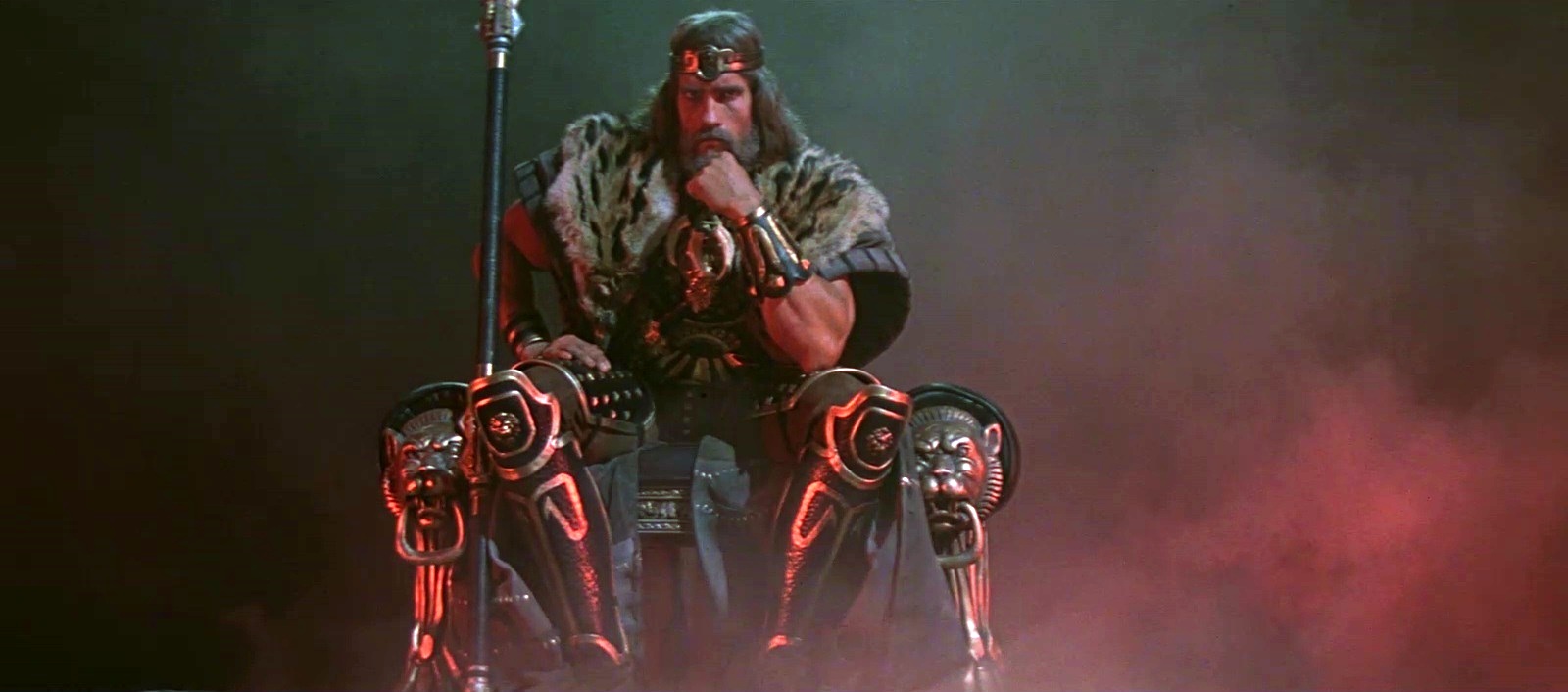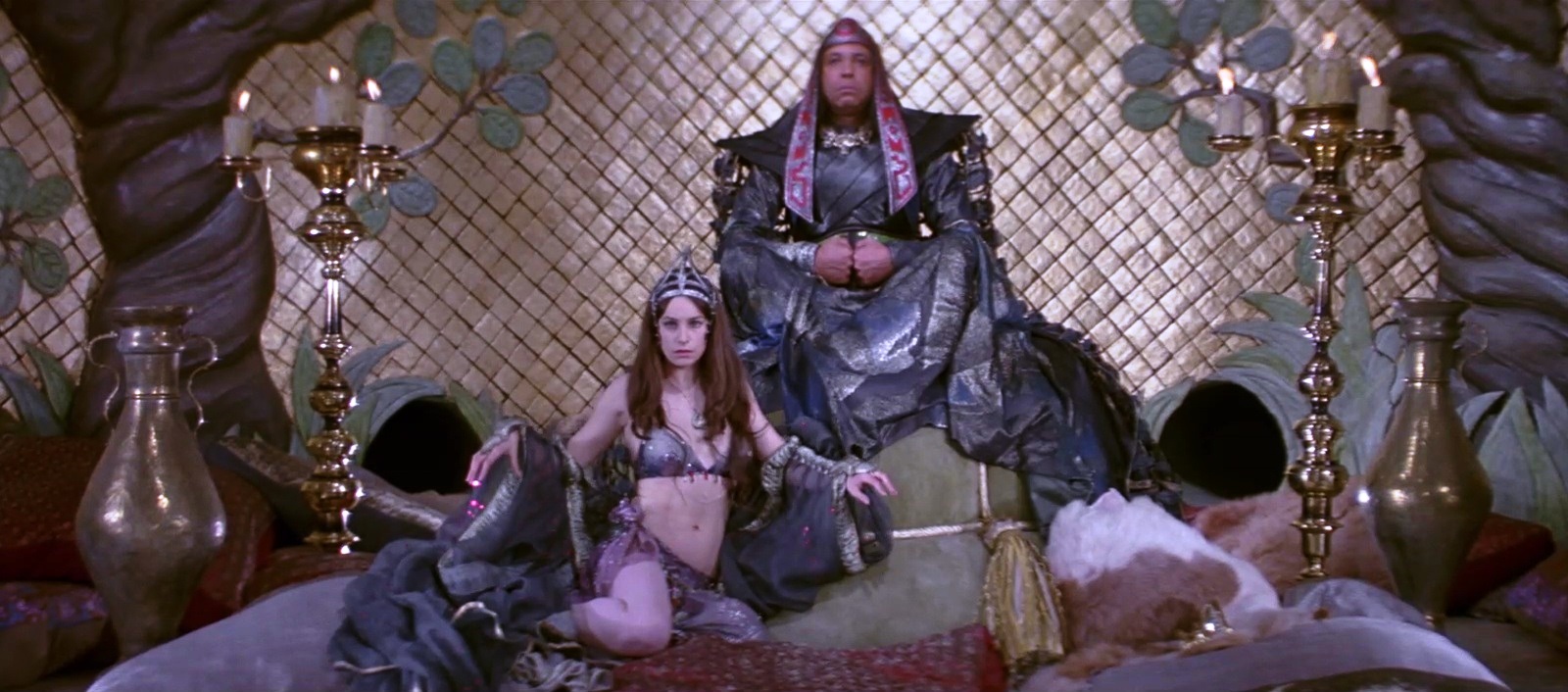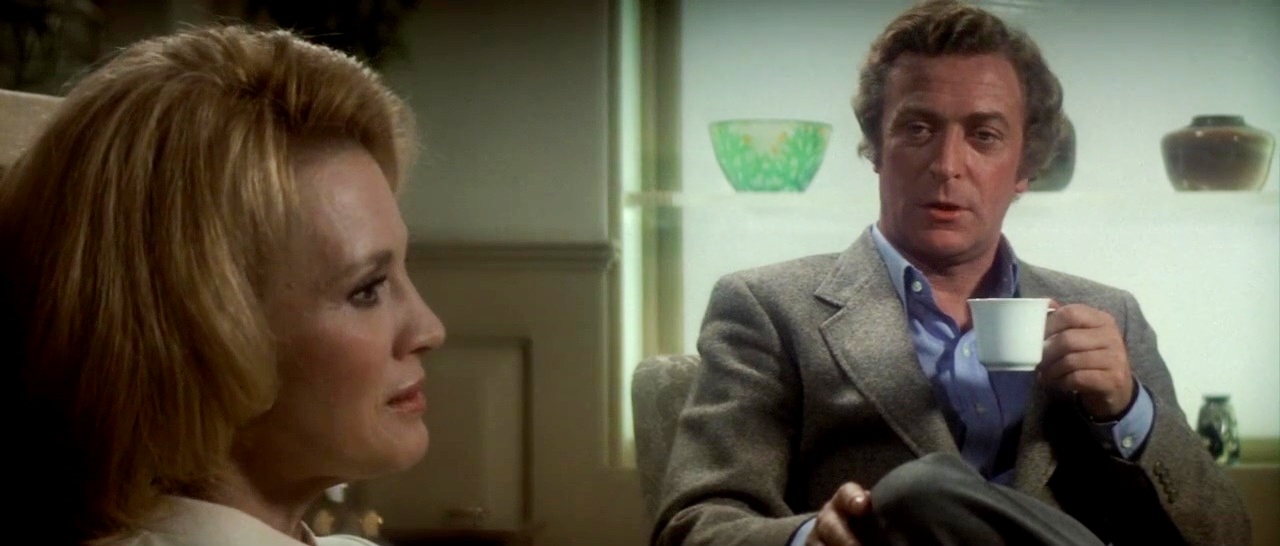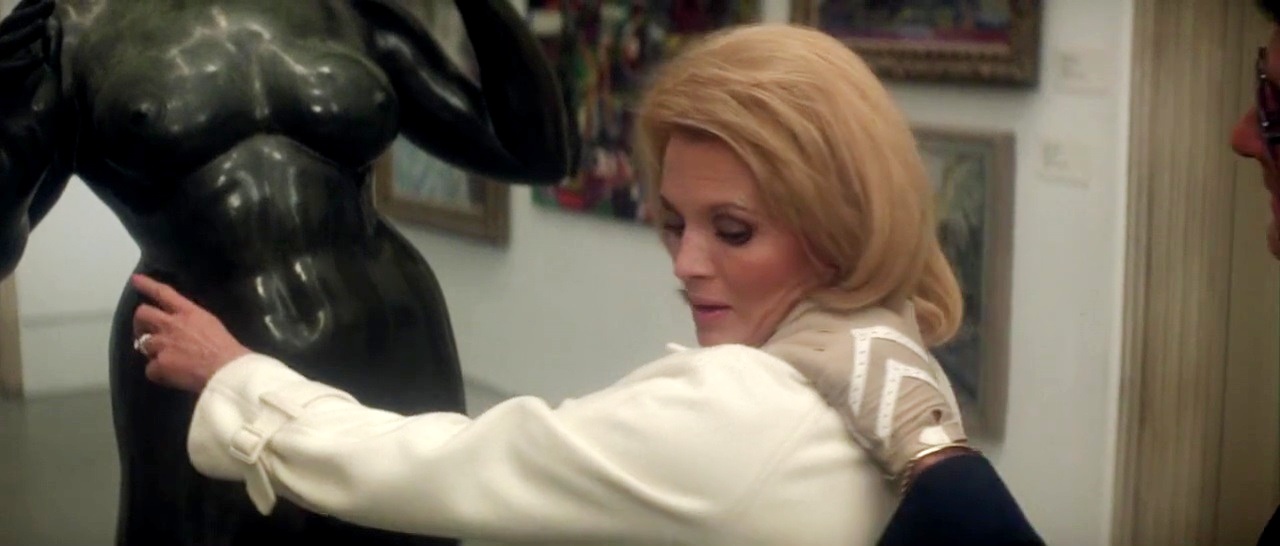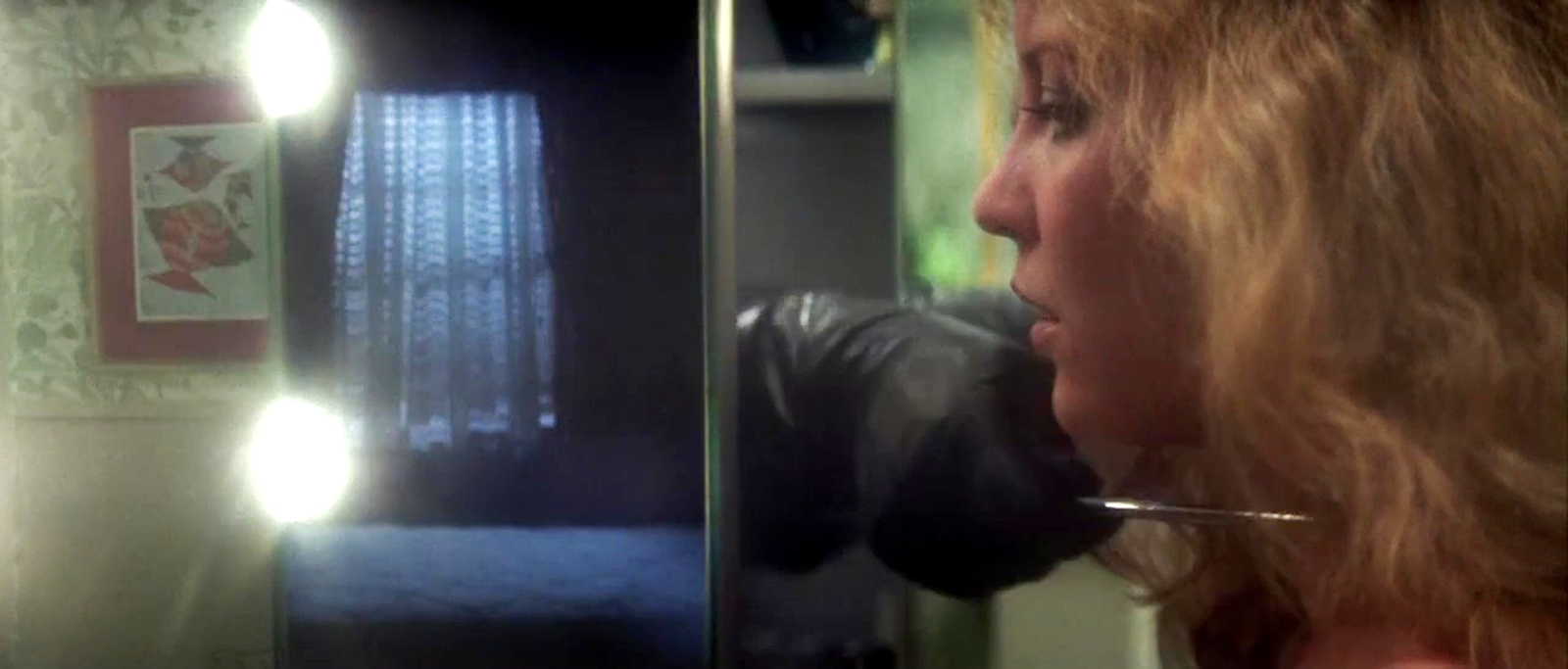.

Director: Mel Brooks
Screenwriters: Mel Brooks / Andrew Bergman, Mel Brooks, Richard Pryor, Norman Steinberg, Alan Uger
By Roderick Heath
Melvin Kaminsky, known to posterity as Mel Brooks, was the child of a classic Jewish-American immigrant experience. Born in Brooklyn in 1926 to a Polish father, who died when he was two years old, and a Ukrainian mother, Brooks’ childhood habitat was the tenements of Williamsburg. Brooks grew up slight and sickly, making him a target for other, more robust kids. Brooks learned to both disarm that rough world and channel his own aggressive streak into a zany persona and found he had a talent for reaping laughs, putting this skill to work when he gained his first job at a swimming pool, aged fourteen. By that time he had already, thanks to his uncle, gained his first encounter with the showbiz world through seeing a performance of Anything Goes, and vowed his future lay there. Brooks taught himself to play drums and changed his name to avoid confusion with trumpeter Max Kaminsky. After graduating high school Brooks had plans to study psychology cut short by service in World War II. After returning from the war Brooks went straight into the Borscht Belt music and comedy circuit, making the acquaintance of Sid Caesar, who hired him to write for TV. In 1950 Brooks was flung into the company of talents like Neil Simon and Carl Reiner when Caesar hired them to write the variety-and-comedy show Your Show of Shows, which proved a smash hit, and the same team worked together on various programs for most of the ‘50s.

Meanwhile the largely improvised comedy bit Brooks and Reiner started performing for friends, involving a 2,000 year-old-man who had witnessed the crucifixion, became a cause celebre in comedy circles. This became a ticket for the duo to become known as performers as well as writers, appearing on talk shows and hit comedy albums. Brooks’ first foray in filmmaking was the 1963 short animated film The Critic, conceived by Brooks but directed by Ernest Pintoff, with Brooks providing the wheezy voice of a confused old man trying to understand a pretentious foreign art film. The Critic won an Oscar, and a couple of years later Brooks linked up with comedy writer and performer Buck Henry to create a send-up of the wildly popular James Bond films, in the form of the TV series Get Smart. Get Smart proved so successful it handed Brooks the chance to make a movie. For some time Brooks had been kicking around the absurd notion of a Broadway musical about Adolf Hitler, a concept that morphed eventually into The Producers, the tale of a dishonest theatrical impresario and his accountant confederate who concoct a scheme to make a fortune by overselling investor shares in a sure-fire flop. Although it gained Gene Wilder a Supporting Actor Oscar nomination in his first major film role and Brooks himself actually won for Best Original Screenplay, The Producers met a largely sour critical reception upon release in 1968, bordering on odium, and proved a box office disappointment, although it did soon begin to accrue a cult following.

Brooks’ follow-up The Twelve Chairs (1970), a more classical kind of comedy based on a respectable novel, did no better. Brooks assumed his directing career was over by this point, but his luck turned when he connected with writer Andrew Bergman, who was peddling a movie outline he called Tex-X, intended as an anachronistic hipster burlesque on Western movie clichés and sporting a Black hero. Brooks bought the property and assembled a team including several writers he’d known on Your Show of Shows, as well as Bergman and rising, ultra-hip stand-up comic Richard Pryor, to brainstorm ideas, a writing process Brooks later described as “a drunken fistfight.” Brooks made a deal to be the film’s director, and finally he delivered a colossal, zeitgeist-tapping comedy hit that made him not just a successful filmmaker but a comedy brand, one he took advantage of to make himself a movie star too. Brooks reunited with Wilder on Blazing Saddles through a series of unfortunate events, and again for the immediate follow-up Young Frankenstein (1974), a film that did for Horror movies what its precursors did for smarmy Broadway shows and Horse Operas. Decades later Brooks adapted The Producers into a very successful stage musical and then a film version of it, of which I will never speak again.

It’s bordering on tedious cliché to say that it’s hard to imagine films like The Producers and Blazing Saddles being made today. Outrageous, boundary-pushing humour is still plentiful but not the specific, confrontational prescription that fuelled Brooks’ best work in daring to press sore spots in the collective mindset, through his preoccupation with cultural tension that manifests as tonal dissonance. Or, to put that in a less high-falutin’ way, it’s real funny when Hitler sings and acts like a hippie and a cowboy talks jive and an Indian chief speaks the Yiddish. The first and most obvious level of dissonance in Brooks’ persona was the side of him that adored movies, literature, and theatre, revelled in their larger-than-life grandeur and stylised power, and the side of him driven to puncture all that, to point out the conflict with a gritty, grimy, streetwise sensibility with the practised disrespect of the professional smart-ass, the medieval court jester reinvented for a new age. Mediating the two facets was his archivist streak, as if some wing of his brain was devoted to precisely catalogued clichés, images, lines, tropes. The second level of dissonance was cultural, as a very Jewish comedian with an experience of being close to the bottom of a new society who, after years of suppressing that facet of his humour to get along with the American mainstream, suddenly found the zeitgeist swinging around to appreciating its specific lilt, its sarcasm towards power structures embedded not just in politics but in narratives and language. And a third layer of dissonance was one of personal character, Brooks channelling his angry, poke-the-beast sensibility into the defusing art of making with the funny.

In that regard Brooks was following in the footsteps of the Marx Brothers, but where they made comedy from testing forms until they broke down in anarchy, Brooks was more methodical, honouring his love of story and character, which could supply their own, coexisting forms of humour, along with slapstick and non-sequitir. Part of the genius of Get Smart as a series had been Brooks’ creation of a hero who was an idiot, in contrast to both the Bondian fantasy of the poised, cool hero, and the usual desire of comedy players to seem quick-witted and knowing: Maxwell Smart was a common man to the Nth degree, swanning cluelessly through dangerous and complex situations he only vaguely understands. Most of Brooks’ rivals and emulators in the zany-and-irreverent comedy stakes lacked his capacity to simultaneously sustain a coherent story and characterisation and work them for more than one style of comedy, although some, like the ZAZ team who would make Airplane! (1980) and Top Secret! (1984), had something of that ability. The scattered children of the Brooksian sensibility, like the beloved triptych of animated TV series, The Simpsons, South Park, and Family Guy, deal with a similar balance of character comedy, social survey, referential and parodic humour, and surreal genre breaks, if all in different proportions.

Rifling through The Producers and Blazing Saddles, a connective thread emerges, distinct from their obviously shared roots in Brooks’ cracked sense of humour, and looking beyond their signifcant differences. Both films display Brooks’ compulsive fascination with the art he loves, his urge to disassemble it and reconstruct it in a new shape according to other random inputs, laden with ironic disparities that can strike others as perverse, vulgar, and wrong, and also very funny. The Producers explores how the sausage is made, often by people who barely have any idea what they’re doing; Blazing Saddles chews it and reports on the taste. For The Producers, Brooks wanted to depict a pair of losers who try to make themselves the masters of their fate, but find themselves no wiser than Smart. Or…no smarter than Wise? Anyway, Max Bialystock (Zero Mostel) is introduced in the early scenes in what is for him the most degraded position possible, albeit one that suits his sick talents: the former master of Broadway producing is now so pathetic and broke he plays gigolo to a stream of ancient women of means who stream in and out of his office “to grab a last thrill on the way to the cemetery.” Mostel, a comedian and character actor who had suffered through a long period of blacklisting but managed in that time to define the lead roles of A Funny Thing Happened On The Way To The Forum and Fiddler On The Roof on stage, was just re-emerging as a movie actor. There’s some irony in the way Brooks cast him to give a roaring, barnstorming beauty of a comic performance that’s pure stage farce hamola, sometimes threatening to topple the pasteboard sets with the force of his outsized energy and charisma. Small wonder Brooks only felt the need to credit him as “Zero” in the closing cast call.

Brooks’ comic sensibility immediately flies a warped flag, revelling in the new openness in American cinema to tackling what would have been utterly verboten five years earlier, most immediately and saliently in making clear Bialystock has sex with little old ladies for money. Having already seen off one sugar momma, Bialystock invites in another, known as “Hold Me! Touch Me!” (the amazing, mischievous Estelle Winwood) for her entreaties, and cycles through role-play scenarios fit for old kinescope porn reels like “The Innocent Little Milk Maid and the Naughty Stable Boy” and “The Contessa and the Chauffeur.” Part of the joke here, a joke that’s wintry in its inferences even as the film seems bouncy and friendly, is that Bialystock is utterly trapped by a greedy world he himself exemplifies, and has experienced the ultimate role-reversal from the usual image of the showbiz maestro preying on eager, young, suppliant females. Enter Leo Bloom (Wilder), an equally pathetic but quite different man, young but repressed, timid, and easily terrified, sent by Bialystock’s financial managers to review his books. Bloom evokes a different cultural wing to Bialystock, his name nodding to James Joyce’s hero and his personality like a Kafka antihero, equally entrapped by an infantilising process enabled rather than dispelled by his dedication to the dry, drearily realistic precepts of bookkeeping.

Bloom interrupts Bialystock in the middle of his session with “Hold Me, Touch Me” and Bialystock, realising he can’t go through with another encounter, hurriedly bustles her out before sternly confronting the cowering Bloom. Bloom’s neurotic angst is soon revealed, barely placated, in a touch pinched from Peanuts’ Linus, by a scrap of security blanket he carries, and worries that Bialystock, in his blustering “rhetorical conversation,” is going to eventually pound him to death by jumping on him like Nero on Poppaea. Eventually the two men find something like sufficient equilibrium to let Bloom get to work, only for him to find Bialystock oversold his last bomb, pocketing $2000 for his own use. Bialystock pleads for Bloom to hide the discrepancy with eloquent pleas, before ending with a simple, loudly screamed, “HELP!” Bloom agrees and then chuckles at the observation that, given no-one cares about the finances of bombed plays, it would be easy to repeat Bialystock’s trick on a fortune-making scale provided it was certain the project they solicited investment for would fail. Bialystock, realising this suggestion’s potential, works seductively on Bloom as they wander around Manhattan, until Bloom suddenly catches the wind of self-fulfilment: “I want everything I ever saw in the movies!” he screams joyfully, dancing around the spuming fountain outside the Lincoln Center to Bialystock’s gleeful approval, half-Mephistophelian, half-schoolboy.

It’s not being that unkind to Brooks to say that for all his greatness at thinking up funny stuff to put in front of his camera, as an actual filmmaker he was by and large only competent, with straightforward blocking and staging that sometimes foils his script and actor’s comic energy as much as liberating: the second coming of Frank Tashlin or Leo McCarey he wasn’t. But comedy filmmaking usually benefits from a relatively stand-offish approach directorially speaking, and something of The Producers’ unique charm stems from his bluntness in capturing the theatrical energy of his performers and their looming physicality, wielding Mostel’s big, bulbous physiognomy as a Mount Rushmore of seediness. The opening scenes, intercut with the credits, have a frenetic quality that puts across the almost blind dedication of Bialystock to his sustaining act, and the mounting hysteria of his encounter with Bloom is marvellously sustained, culminating in Bloom striding around the fountain, filmed with a tracking shot tracing an arc with him that transforms him briefly into exactly the kind of movie hero he wants to be. The environs of Bialystock’s offices – he soon swaps out his grubby digs for rooms that fulfil his credo of “That’s it baby, when you’ve got it, flaunt it, flaunt it!” are comic arenas where shamelessness is appropriately over-lit to better pick up flopsweat on the hairline, and the threadbare pathos of failure and the chintzy trappings of success are barely discernible. Brooks pulls off some artful camera touches nonetheless as when he shoots Biaylstock in all his looming, fat-faced ridiculousness in close-up whilst entertaining “Hold Me, Touch Me” who sits diminished behind, and a zoom shot of Bloom skipping around the fountain whilst Bialystock revels, the erupting water evoking the orgasmic pleasure of their choice to go bad and get rich. And Brooks lands one, great joke dependent on intelligent directorial staging, even as it merely involves a static shot and use of sound: Bialystock knocks on the door of one of his ladyfriends and hears her frail voice through the speaker, “Just a minute!” and then the sound of dozens of locks being undone, Bialystock wilting during the process.

Part of the cunning Brooks invested in The Producers lies in its slight exaggeration of believable elements, caricaturing people Brooks had doubtless encountered over the years in show business and embarking them on the kind of scheme that’s commonplace in that business’s wheeling and dealing – for instance, it was rumoured that Marty (1955) was financed as a tax write-off only to prove a hit, a twist of luck that’s only cream so long as the investment wasn’t oversold – pushed only to the fringe of the absurd as Bialystock and Bloom sell the play to 20,000%, thanks to Bialystock hurling himself with new enthusiasm into his circle of brittle old “investors.” The first stage in their scheme requires however finding a property to stage so soul-grindingly rank it’s guaranteed to flop. After a spirit-killing session reading through piles of plays, Bloom is ready to throw in the towel, only for Bialystock laugh giddily and proffer one like a tablet of the Ten Commandments as the essential bomb in the making, a “guaranteed-to-close-in-one-night beauty” entitled Springtime For Hitler: A Gay Romp with Adolf and Eva in Berchtesgaden. Heading out to track down the author, Franz Liebkind (Kenneth Mars), they find him atop his apartment building where he keeps pigeons, clad in ratty long underwear and perpetually sporting his army helmet. Liebkind proves to be a Nazi fanatic determined to present to the world the idealised version of Hitler he has long cherished. After first assuming Bialystock and Bloom are immigration men and launching into a mangled version of “The Star-Spangled Banner,” upon finding what they’re after he launches into depraved rants insulting Winston Churchill and talking up Hitler’s talents (“Not many people knew it but ze Führer was a terrific dancer!”) whilst talking to his birds like surrogate children.

Mars’ performance nearly thieves the film from Mostel and Wilder’s pockets, playing a character who is contemptible, irascible, and violent, but also wields a vein of pathos, an exposed nerve of perversity. He’s a degraded hold-out of a defeated cause who’s become just another New York weirdo, violently alternating between weepy paeans to the lost idyll that was Hitler’s Germany as it subsists in his war-fried brain and ranting displays of fascist imperative lurking behind his desire. But he’s also like so many other wannabes hovering at the outer fringes of show business, desperate to be hailed for his labours and have his strangeness reclassified as genius: he’s like a fictional, slightly more coherent prediction of Tommy Wiseau. Liebkind launches into a mangled version of “The Star-Spangled Banner” when he thinks the producers are immigration agents, swiftly pivoting to “Deutschland Uber Alles” when he thinks he’s about to pull off the great rehabilitation. “You are ze audience,” he informs one offended woman at the show’s premiere, “I am the author – I outrank you!” Later, when he tries to halt the performance and recount his own memory of Hitler, one of the cast hits him on the head from behind the curtain: Liebkind keeps on speaking without seeming to feel the blow until he suddenly cries, “Ow!” and collapses. Brooks liked this gag so much he repeats it in Blazing Saddles. With Liebkind, as elsewhere, Brooks encompasses a squalid world full of losers who reflect and mock showbiz pretension, locating cheerful absurdity in it all: even the lunatic Nazi is a creature of need. Bialystock resides in his office, yellowed and peeling posters for ancient hits on the wall, filth on the window, hair draped like sun-dried seaweed to his scalp: Bialystock tosses the contents of a bad cup of coffee against a window pane and rubs away grime with his scarf. The gate to Liebkind’s building is kept by a woman (Madlyn Cates) who insistently calls herself the concierge, and retorts to Bloom’s courtly “Thank you, Madam,” with “I’m not a Madame, I’m a concierge!” Bialystock and Bloom are willing to pervert themselves to the degree of putting on Liebkind’s Swastika armbands to seal the deal, although they quickly deposit these in the garbage on the street and add their loogies for good measure.

The moment he smells a return of fortune Bialystock rewards himself with “a toy,” that is, hiring a Swedish go-go dancer and stripper named Ulla (Lee Meredith) who can barely speak English as his secretary and quickly schooling her in such refined arts as preparing his cigar. The Producers gets away with this in large part whilst still retaining sympathy for the two antiheroes because it ultimately presents Bialystock and Bloom as a pair of children inhabiting adult bodies, utterly bewildered and at the mercy of the grown-up hungers those bodies experience and the world they travel through, ready to abandon all law and principle if it means grabbing a hunk of all the things that tantalise without mercy. Again, the state of the common man in Brooks’ view. Brooks peppers their journey with other assorted unwitting stooges for the bomb-in-the-making with more enthusiasm than talent, including the director Bialystock hires, the ultra-camp Roger De Bris (Christopher Hewett), and his fey assistant Carmen Ghia (Andreas Voutsinas), and the brain-faded hippie musician Lorenzo St. Dubois (Dick Shawn), or LSD for short, who lands the pivotal role of Hitler in the play. Comic stereotypes all, of course, but slotted in to provide a social survey of weirdos defined chiefly by being a slightly different taxonomy of weirdo to the main characters. Bialystock and Bloom visit to De Bris’s house (“He’s the only director whose plays close on the first day of rehearsal.”) to hire him sees them forced to squeeze into a lift with Carmen, and find DeBris squeezing himself into a ball gown for an industry ball (“I’m supposed to be the Grand Duchess Anastasia, but I think I look like Tugboat Annie.”) and hitting on Bloom. Carmen responds to De Bris’ inspired vision of female Stormtroopers in S&M gear inserted into the play with an ecstatic “Love it!” The irony here is that De Bris and Carmen, playing up the whole concept of theatre camp to a far horizon, also offset the heavy overtones of sublimated love between Bialystock and Bloom themselves.

LSD, for his part, only auditions accidentally after Bialystock, Bloom, and De Bris suffer through hours of auditioning performers all trying to establish their Germanic credentials (my favourite: the one who insists on finishing his song and then blows De Bris a raspberry). LSD stumbles in looking for another show but is talked into giving a performance with his all-girl band, and gives an unhinged performance of a song he wrote called “Love Power.” Sample lyric: “And I give a flower to the big fat cop – he takes his club and he beat me up!” The actual premiere of Springtime For Hitler sees the audience utterly horrified by the spectacle DeBris offers in his opening production number, with a crisply uniformed SS man warbling the paean to Nazi ambition and restored German national glory (“We’re all marching to a faster pace! Look out, here come the Master Race!”) whilst scantily clad girls in pervy versions of folk dress swan about. Then out comes a kick-line in Gestapo duds, forming themselves into a Swastika for a climactic parody of Busby Berkeley-style choreography. This is made all the more merciless by the fact the “Springtime For Hitler” title number is infinitely more memorable and insidiously catchy than any number of proper show tunes. It’s a good candidate for the single funniest scene in cinema, but it’s not an innocent kind of laughter, rather the kind that relies on the audience being provoked by the profound dissonance of subject and form, and then by the dissolution of dissonance by the time one finishes the movie and starts humming “Springtime For Hitler.”

The Producers ruffled feathers upon release for its blithe approach to making fun of the most serious subject imaginable, Hitler, and its many other fillips of sick humour. “Well, talk about bad taste!” one of the eventual audience members of Springtime For Hitler exclaims, neatly summarising exactly what Brooks set out to extol, revelling in being freed from the shackles of TV. But the quality that The Producers shares with Blazing Saddles is the sense of purpose underlying the freewheeling lunacy. The Producers executes a specific kind of revenge fantasy on the very concept of Hitlerian power, a step further than even Charlie Chaplin dared and the kind that perhaps only a Jewish comedian could come up with, reducing the psychopathic god to a peevish vaudeville character and his rhetoric to the stuff of cornball musical theatre. Bialystock and Bloom become Brooks’ proxies in this ironic mirror, seeming to conspire with the shades of the evil regime only to deliver it the most humiliating kick, whilst their eager delight in watching the show unfold and seeing the appalled reactions of their audience becomes a peculiarly cunning comic artist’s self-portrait, the professional’s hunger for validation melded with the provocateur’s delight in burning the house down. At the same time Brooks easily swats other targets, particularly to the tropes of the musical, so devastating that the form has, indeed, never really recovered, seeing the fascist will nascent in the urge to carefully orchestrate and subordinate dancers to geometry and rhythm, the reduction of murderers’ uniforms to a form of sexual fetish, and the edge of maniacal charisma contained within the nominally pacific style of the Counterculture’s music.

Bialystock and Bloom initially think their plan has worked brilliantly, only for the start of the actual play to hold the audience in their seats as, through casting LSD and with De Bris’ gaudy, tacky musical insertions and comic interventions, Springtime For Hitler has been turned from fascist paean to a broad farce and satire, perfectly attuned to an era where camp had become an aesthetic value. Of course Bialystock’s instincts, utter out of compass for years, will conspire to create success where he wants failure. Meanwhile Liebkind watches in sobbing despair in beholding what’s happened to his play, and tries to stop the show, only to be knocked out and taken for just another gag. This twist eventually drives the producers to make compact with Liebkind, after the Nazi in his rage tries to shoot them, to blow up the theatre and prevent more performances, only for Liebkind to get muddled during planting explosives, the blast injuring the three men and ensuring they’re caught. In court, where the three injured men are tried together (Liebkind swathed like a mummy but still with helmet on) Bloom makes a heartfelt plea on Bialystock’s behalf, but it’s not enough to prevent their journey to the hoosegow, whereupon they immediately repeat their plot by staging a musical called Prisoners of Love and accepting investments from the prison staff: Bialystock and Bloom are again in their element.

The gorgonizing mirror that is show business itself is the ultimate target of The Producers, existing in constant, tormenting relationship with the nursed fantasies, cherished ambitions, and deepest perversities not just of the audience but its makers. A zone defined by gravity-defying magic where one can not only make great piles of cash but also encounter the most beautiful and talented people and suborn them to your will in manners beautiful and awful, but which remains eternally unpredictable, a careening beast where what should be good becomes bad and vice versa depending on a thousand chance elements. Lessons Brooks himself was well-versed in, and after Blazing Saddles delivered a hit for him. There was some luck in this and also a pay-off for cultural seeding Brooks and others like him, including MAD Magazine, the Harvard National Lampoon in print and a generation of madcap improv theatre and stand-up comics like Lenny Bruce, that finally saw him hitting the zeitgeist bull’s eye. Blazing Saddles was specifically a madcap parody, most of Brooks’ subsequent films adopted that approach, aping classical genre plots to hang gags and sketches off. The best of them still kept some thesis in mind: Young Frankenstein, for instance, defuses the very idea of monstrosity and plays intricate games with notions of legacy and identity. For its part, Blazing Saddles undercuts the fantasies contained in many Westerns and deals directly with the basic national racial schism usually, strenuously avoided in the classic Western genre, ironically coinciding with the popularity of Blaxploitation film which performed many a remix on stale genres. Brooks inherited this idea from Bergman and it doubtlessly was amped up by Pryor, standing at odds with Brooks’ usual sensibility to a degree.

The style of much humour in Blazing Saddles – which today we might describe as “very politically incorrect” or “not woke”, and which was despite current rhetoric pretty much as controversial in its time as now – serves an ironic purpose, highlighting things usually excised from more polite exercises, revealing gaping vistas of experience in the classic Hollywood movie where people couldn’t fart or fuck and basic social truths were usually carefully mediated if mentioned at all. This principle is apparent in so much of the movie, ranging from the infamous, show-stopping campfire scene sporting a bunch of cowboys chomping down baked beans and making flatulent music, to villainous henchman Taggart (Slim Pickens) giddily describing how he and his men like “rape the shit” out of any women they capture whilst marauding. Blazing Saddles makes brutal sport undoubtedly for the sheer hell of it, but the little winces of pain as well as hilarity such lines provoke are a proof of life, blowing the lid off some secret aspect of life usually elided in the formalities of a classic movie. The opening scene sees a gang of white railway construction overseers try to get the mostly black and Chinese labourers to sing a work song for their entertainment, deftly makes multiple kinds of sociological sport, as workers, led by the smooth, poised, insolent Bart (Cleavon Little), sing jazz standards to the bewildered bosses, who respond by acting out the way they expect the Blacks to act, making tits of themselves in the process.

Blazing Saddles was taking on the squarest of square movie styles at a time when John Wayne was still hauling his pendulous carcass into the saddle, but the genre which had been Hollywood’s essential cash cow for decades was on a steep decline: Blazing Saddles completed the job of breaking it so effectively it was difficult to make more Westerns without a comparison falling from some wiseacre’s lips. The opening titles sport a theme song sung by country singer Frankie Laine that’s played completely straight in lyrics and music in mimicking the traditionally stirring genre theme tune, save for the hint of sarcasm in the overwrought title itself. The plot, involving a scheme to seize land and make a fortune from a railway being constructed over it, could come right out of any number of straitlaced horse operas. But the décor Brooks and his writers hang on that frame is seditious. Bart and another labourer Charlie (Charles McGregor) are dispatched by Taggart, the chief foreman, on the railway handcart to see if the track ahead is sinking in quicksand, and sink into the muck they do: when Taggart and his men arrive he diligently uses his lasso to pull the handcart from the quicksand and leaves the two disposable workers to die. It’s funny, as they say, because it’s true. Bart and manage to squirm their way out, before Bart grabs up a shovel and crowns Taggart with it, landing himself a ticket to the gallows in the territory capital.

Meanwhile, the railway’s course is set to be diverted across the solid land belonging to the burgeoning town of Rock Ridge. Taggart and his men are in cahoots with the Territorial Attorney General, Assistant To The Governor, and State Procurer Hedley Lamarr (Harvey Korman), who sees a way to make a fortune by obtaining the land, and sends the henchman to terrorize Rock Ridge’s citizens into fleeing so Lamarr can take it over. When this fails and the townsfolk demand a sheriff to protect them, Lamarr looks for a way to fatally demoralise the town, and hits upon the idea of pardoning Bart and convincing the territorial governor Le Petomane (Brooks), Lamarr’s partner in the land grab, to appoint him to the sheriff’s job. Bart is greeted in the town with expected racist bewilderment and disdain, but he makes friends with a drunk in his jail who calls himself Jim but proves to be the legendary gunslinger known as the Waco Kid (Wilder), and gains some respect when he outwits and captures a hulking goon, Mongo (Alex Karras), sent by Taggart. Lamarr next tries to destroy Bart by less direct means, engaging the travelling chanteuse Lily Von Shtupp (Madeleine Kahn) to seduce and humiliate him, only for Bart to prove so well-armed trouserwards that Lilly instead becomes his slavish devotee. At last Lamarr hires a small army to reduce the town to ashes, so the townsfolk, at Bart’s direction, build a Potemkin Village-like replica of the town to serve as a trap for the villains.

That Blazing Saddles has that coherent a storyline for most of its length is remarkable considering how casual it is in subverting it at any opportunity. Brooks employs manifold flourishes of meta humour, like a little old lady being beaten up by thugs suddenly looking at the camera and decrying her treatment, or Bart blowing up Mongo with a dynamite-laced candygram and then noting the hardest part of this trick was inventing the candygram. Mongo himself recreates a familiar trope in many a classic adventure movie of a husky but almost childlike henchman who swans into Rock Ridge and punches out a horse before being beaten by Bart. He becomes loyal to Bart, the first man never to whip him, to the point Waco teases him for being in love with Bart, to which Mongo irritably retorts, shoving them both aside, “No, Mongo straight!”, and later muses, “Mongo only pawn in game of life.” Brooks similarly undercuts Lamarr’s pretences to being the adult in the territory as he desperately seeks his rubber frog during bath time, as Taggart scrubs his back. Brooks makes swerves into other genres, like the hangman for the territory (Robert Ridgely) being modelled on Boris Karloff’s performance in Tower of London (1939). Blazing Saddles constantly announces itself in friendly quarrel with the ghost of Hollywood respectability. Lamarr anticipates, during his rousing villain’s speech to his men, getting an “almost certain Academy Award nomination for Best Supporting Actor.” Bart forces the townspeople of Red Rock to wait for him by invoking the holy name of Randolph Scott. Lamarr’s name evokes the iconography of classic Hollywood star power through Hedy Lamarr whilst destabilising Lamarr’s supposed authority with a girly name.
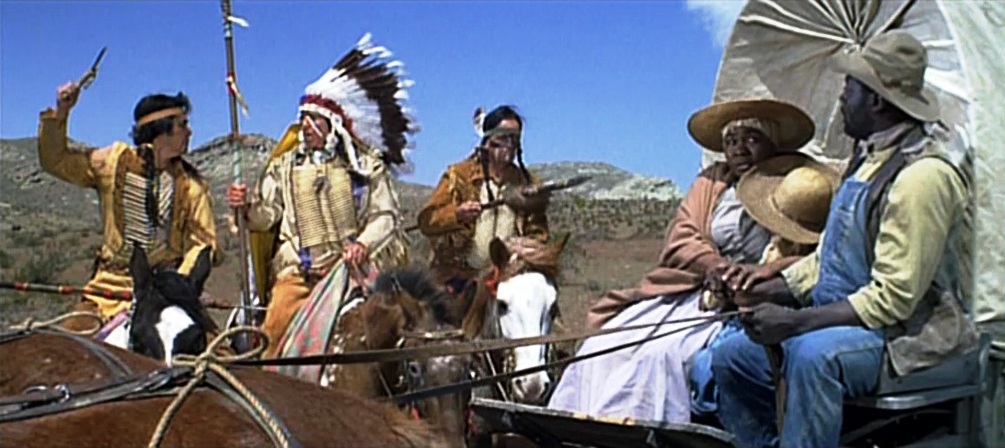
Brooks poking fun at the product of Hollywood’s golden age had loaded meaning when Blazing Saddles was released: whilst far less consequential than mocking Hitler, Brooks was still rubbing salt into an open cultural wound. As well as mapping out all the sociological ructions, sharp veers in what was permissible on screen, and changing perspectives on history and communal meaning sparked during the 1960s, Brooks also, casually informed the industry that the genre that had once been its mainstay was dead, even if, like a dinosaur with a slow nervous system, it kept moseying on a few more years before keeling over. The old stars, the old studio bosses, the old directors were dying or retiring. John Ford might have been grateful he died a year before Blazing Saddles came out, although Wayne, whilst turning the Waco Kid part down, told Brooks he’d be first in line to see the movie. At a time when a small industry whining about dirty words and sex scenes in movies was sprouting in reaction to the new Hollywood product, the old kind was rapidly becoming mythologised as grand imperial age. Brooks dramatized the disparity, setting eras in pop culture in quarrel and enjoying the mess.

That mess includes barbed commentary on the period racism and carnage usually gleaned over in movies: “Here we take the good time and trouble to slaughter every last Indian in the West and for what? So they can appoint a sheriff that’s blacker than any Indian!” Taggart moans after finding Bart is now sheriff. The studio wanted Brooks to remove the many uses of the slurs in the script, but Little and Pryor back Brooks, largely I think because they felt it had a purgative value. Blazing Saddles cleverly tells a modern story of post-Civil Rights-era in satirical period garb: moments like Bart struck dumb as a nice little old lady spits “Up yours, nigger!” at him have more truth in them than Stanley Kramer’s entire filmography. The film offers a clever, witty, debonair, intelligent Black hero in Bart, slick and dressed like Roy Rogers and embodying the perfect Western hero just as much. Bart finds a way to operate despite being faced with deep contempt from all sides save the equable Waco, who is himself struggling a la Dean Martin in Rio Bravo (1959), out of a pit of alcoholic degradation, showing off his shuddering shooting hand at first but soon enough getting his mojo back. Bart’s arrival in Rock Ridge sees him threatened and insulted, only for him to extricate himself by taking himself hostage, toggling between the persona of a gruff gunman and a cowering comic relief Black, before retreating into the jailhouse and congratulating himself: “Oh, baby, you are so talented!” The townsfolk themselves all have the same surname of Johnson, a touch that nods to familiar movie cliché where the name Johnson was often applied as a kind of everyman badge, and also witty as a racist inversion, the white people all rendered bland and lumpen in identity.
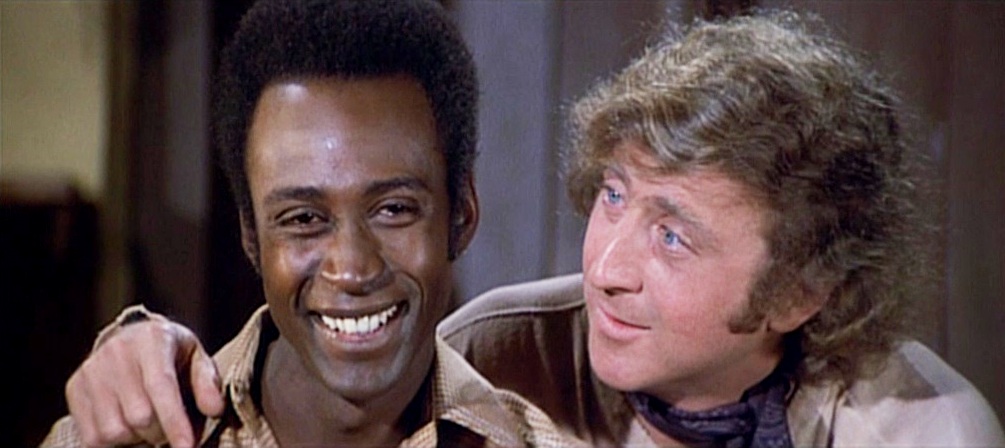
One of film’s funniest and certainly its warmest moment, perhaps the one that almost most directly achieves that purgative effect, comes after the aforementioned insult from the old lady as Waco consoles the depressed Bart with a gentle speech about keeping in mind what simple, ordinary people he’s dealing with, “these are people of the land, the common clay of the new West…You know…Morons.” At which point Bart grins in delight. Like Bialystock and Bloom, Bart and Waco are misfits who find solace in each-other’s company and maintain a conspiratorial attitude against the world, only in this case with an aim to saving it rather than exploit it. The chemistry evinced here between Little and Wilder is all the more vital given Wilder was only pressed into his role when Brooks’ first choice, Gig Young, had to be replaced as his actual alcoholism was catching up with him. Waco was supposed to a leathery, haggard old-timer, tailor-made for a worn-in familiar face, but bringing in Wilder, who since The Producers had become a star in his own right, helped reinforce the film’s hip quality. Little himself was making his feature film debut, having previously only been a stage actor: Brooks had originally intended for Pryor to have the role, but Pryor was still considered too wild and risky a talent. Little is ideal in the part, however, and even given the smaller window for Black headliners in ‘70s Hollywood it’s bewildering that Little didn’t become a huge star, or at the very least get more roles than some TV guest spots.

Meanwhile Brooks casts himself as Le Petomane (his character name a deep cut of reference, to a nineteenth century French performer whose name literally meant “The Fart Maniac,” a clear sign Brooks knows well how the tradition he works within is) and as an Indian chief remembered by Bart in a flashback, who spared the lives of his family who were trailing a wagon train whilst his warriors massacred the rest. As the Governor, Brooks nailed down a characterisation he’d take up again in A History of the World, Part I (1981) as King Louis of France and which also links back to Bialystock, as a distractible satyr with the moral and mental poise of a ten-year-old, delighting in the capacious bosom of his secretary and easily manipulated by the splendidly slimy Lamarr, who is in turn constantly frustrated to the point of rage in being a clever guy surrounded by frontier nitwits. The film is nonetheless just about entirely stolen by Kahn’s pitch-perfect lampoon of Marlene Dietrich as Von Shtupp, perfectly mimicking the great old star’s languid lilt and performing a song entitled “I’m Tired,” a riff on Dietrich’s persona as the been-there-done-him scarlet woman, nodding most immediately to her roles in Destry Rides Again (1939) and The Blue Angel (1931). Her performance of “I’m Tired” (sample lyric: “I’m had my fill of love, from below and above.”) repeats some of the shtick of “Springtime For Hitler” as she’s joined on stage by some dancers in Teutonic army uniform, and indeed it’s an early example of how Brooks would keep trying to better his classic of crass and fail.

Lily’s downfall proves to be Bart’s prodigious manhood, setting out to test the myth of Black trouser snake size and bleating “It’s twue! It’s twue!” as the lights go out. This sort of thing also encompasses a more timely parody of the fast-emerging cliché of Blaxploitation films with their bullet-proof, long-schlonged lady-killer heroes. Dissolve to Lily serving Bart a gigantic sausage for breakfast: “Fifteen is my limit for schnitzelgruben.” Brooks had become a slicker filmmaker by this point, although a lot of scenes, particularly around the Governor’s offices, are played out in the most functional point-and-shoot fashion. Every now and then, though, he wields a genuinely clever sense of camera cause and effect. One moment pays direct tribute to the kinds of sprawling compositions in a MAD cartoon, his camera makes a lengthy dolly surveying the motley assembly singing up for Lamarr’s force, including Mexican bandits, bikers, German soldiers, Confederates, Arabs with camels, and Ku Klux Klan members. An earlier, famous shot is more subtle in its sleight of hand, when Bart first appears decked in cowboy gear, shiny star on his chest. Anachronistic jazzy music stars playing as if to aurally announce that this here is not your daddy’s cowboy, nosiree, this is a cool Black one. It’s the sort of cringe-inducing musical cue often delivered in to play on an audience’s ironic awareness whilst not quite violating the fourth wall: hell, something like The Harder They Fall (2021) does the same thing only with a different music style. Except that Brooks takes it a giant step further as Bart rides across a plain to find Count Basie and his full orchestra playing in the middle of nowhere, Bart swapping high-fives with the great bandleader. Layers of history and art collapse together in one perfect surrealist gesture.

This vignette illustrates how Brooks’ more high-minded mentality melds with unexpected ease and fruitfulness with his down-and-dirty impulses. The nods to Joyce and Kafka in The Producers are supplanted here by devices borrowed from Theatre of the Absurd figures like Luigi Pirandello, luxuriating in the way making a comedy offers a casual smokescreen to all accusations of pretension and dramatic lapse. This is taken to a logical extreme at the film’s end when the actors burst out of one movie and start invading others. Abandoning the coherent plot of The Producers and its essentially character-based humour was a risk for Brooks and indeed as he became known for his parodies his films began settling into loose-jointed skits: Blazing Saddles works in large part because it offers such a deluge of them. But the story of Bart and the Waco Kid and Lamarr’s partnership hangs together just enough to give the film a level of dramatic unity, and indeed making the film as a whole a particularly wry entry in the ‘70s buddy movie stakes. Brooks delivers a climax where Lamarr’s mercenary band attacks Rock Ridge. To delay them long enough to put finishing touches on their trap, Bart and the townsfolk set up a fake tollway in front of the approaching brigands. Having lured the bandits into the fake town but failed to properly set explosives to blow them all to hell, the heroes must fall back on Waco’s incredible aim to set it off.

This turn of plot feels surprisingly clever and substantial, balanced by the imagery of the villains wheeling about a fake town populated by bobble-headed cut-outs standing in for townsfolk and kicking over false fronts. This is again touched with odd genius, at once seeming like an only slightly too ridiculous scheme and touched once more with a meta aspect, making the flimsy nature of Hollywood sets into a part of the story: the suspension of disbelief the audience is usually expected to make confronted by false environs and bad special effects might as well extend to the characters in a movie too. The good guys charge in to finish the job and the two sides battle in the street, whereupon Brooks pulls out in a long zoom shot to reveal they’re now in the midst of a Hollywood backlot. Zoom in again on a sound stage, where a bunch of very camp dancers are filming a number called “The French Mistake” but stumbles in the choreography infuriate the director (Dom DeLuise) who tries to show they how it’s supposed to go only to screw it up himself. The brawling cowboy picture actors crash onto the set, the dancers join the melee after Taggart hits the director, a hulking he-man seems about to beat up some skinny hoofer only to sneak out on a date with him, and others make like Esther Williams in a pool.

This shattering of form and resulting explosion of joyous mayhem is very much the culmination of Brooks’ sensibility even as it announced it as far as the mass audience was concerned. The entire filmmaking machine breaks down, fakery and factory becoming inseperable. One waning genre, the Western, confronts another, the Musical, affected machismo and campiness colliding and battling but also finding their delightful new fruitions. The old Hollywood pantheon (in the form of cement hand and shoe prints out front of the Chinese Theater) confronted by their inheritors wearing the drag of fantasy-satire extrapolation. Lamarr pauses before dying to ponder bewilderedly at the size of Douglas Fairbanks’ footprints and then scratching his name and creed ($) into the ceement, whilst the heroes seek out a happy ending – “I love a happy ending!” Waco exclaims – in the movie theatre, having had enough of real life already. In a great little throwaway touch, Waco, reabsorbed back into the movie, still clutches the tub of popcorn he bought in the theatre. Waco and Bart ride off together, having saved the town, but soon dismount and climb into a chauffeured car to drive into the sunset. The true meaning of movies, Brooks notes: when they work everyone goes home happy, but some go home in a limo.





























































